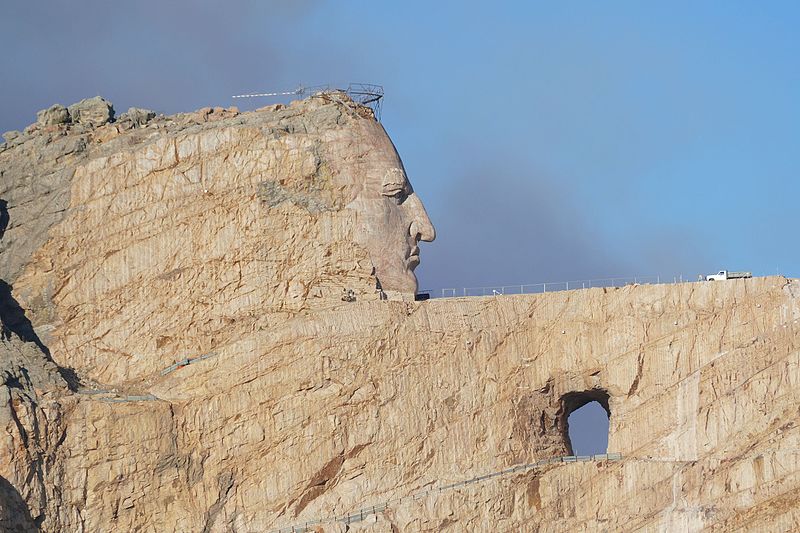“Vision” is one of those business words that used to have a lot more meaning than it does today. Overuse and misapplication have nearly reduced “vision” from a transformational foundation into a buzzword without any real power. This need not be the case, either for you or for the team you lead.
Every leader may choose to tap into the power of vision. However, they will not reach their full potential unless they embrace one fundamental aspect of vision that is, often, missed:
Visionary leaders build something they will never see completed.
A company may begin with a simple idea to market a single product or service, yet, if the leadership chooses to stick just to that, it is unlikely this enterprise will thrive from one generation to the next.
When city planners begin the slow, tedious task of developing a long-term growth plan, many do so with the clear understanding they will be out of office, or perhaps long dead, before their work is ever brought to fruition. Yet, if these talented, innovative and hardworking people refuse to walk behind the proverbial plow and till the land, that work would never begin. Many cities across the world have suffered because their leaders lacked this vision. The evidence is clear: sprawl, blight, lack of water, resources and funding for services.
The evidence of good long-term planning is also clear. Thriving communities, well-tended green spaces, cultivated infrastructure … and a new generation of planners committed to moving the work forward.
Crazy Horse: One family’s generational vision
There is another project in the works in the American West that also embodies these principles. In South Dakota, about 15 miles southwest of the famous monument carved into Mount Rushmore, is an even more imposing work in progress. The massive memorial to Native American leader Crazy Horse was begun in the 1940s by Korczak Ziolkowski, an accomplished sculptor who honed his craft working for Gutzon Borglum on Mount Rushmore. Hearing of Ziolkowsi’s prowess, Chief Standing Bear commissioned Ziolkowski to create a monument celebrating all of North America’s native tribes.
Ziolkowski embodied the adage “go big or go home,” designing a monument on such a massive scale that everyone involved knew they would never live to see it finished. This deterred none of them. They drew up plans, put together a team and started chipping away.
Decades passed. Eventually, so did Korczak. Today, the work continues through the Crazy Horse Memorial Foundation. Four of Ziolkowski’s children and 23 of his grandchildren remain actively involved in the work, a vision that continues to thrive.
When famous British TV host, Stephen Fry, asked one of Ziolkowski’s sons if he would ever see his project finished, he shook his head noncommittally. “I just work on it every day, so that, one day, it will be finished.” To this man, the project is more important than personal glory. Like his father, he knows he probably won’t live to see it completed. Yet he persists, because of all that is accomplished in the process: all the lives touched and interest in history sparked because of the work.
The story of the Ziolkowski family and the Crazy Horse Memorial encapsulates the three points of what John Maxwell calls the pyramid principle of visionary leadership.
3 points of successful long-term visions
POINT 1: Do something that isn’t for ourselves
Visionary leadership is not about us. It’s about others. When we set out to accomplish something for others, that vision is, by its very nature, inspiring and compelling to those who encounter it. People love finding ways to help other people, and when we create those opportunities as part of a larger vision, we inspire others to bring their time and talent alongside us to build an even greater vision.
POINT 2: Do something bigger than ourselves
As with the city planners and massive monument sculptors, projects that are built to last are often too big for one person to accomplish on their own. History may only name the leaders, yet every one of them had a team working with them every step of the way. Many of the best visions are those that scare us a little – or a lot – because we know we may not be able to achieve them on our own. These visions force us to reach out and lean in, to bring others on board to share the work and the glory … even if that ultimate success is not realized until much later.
POINT 3: Do something for the next generation
There’s been a lot of negative things written by my generation about the Millennial generation. A lot of the criticism is the same sort of thing our parents’ and grandparents’ generations said about us, and much of it is patently unfair and shortsighted. Most Millennials simply want to do and be something that matters. Their time, talents and energies are a huge and virtually untapped resource for anyone with a vision to serve, to help and to make the world a better place.
So, instead of complaining and stereotyping, where is our generation in working to develop visions that will benefit ourselves and generations to come? What could be accomplished if we chose to work together to do great things our children and grandchildren could enjoy?
How does your vision stand up to these points? Are you building something for others, something bigger than yourself, the next generation will enjoy? If so, what does it look like, and what has it taught you? Share your thoughts in the comments below.
*Crazy Horse image by Bernard Spragg. NZ from Christchurch, New Zealand [Public domain], via Wikimedia Commons
Why personal growth requires a plan
Everyone wants to be the best version of themselves. Sometimes, when they don’t meet the standard they set for themselves, they begin to feel frustrated or depressed, struggling with the same challenges they faced yesterday. If you feel that way, you’re…
How to hire the right mentor
Everyone “knows” they could benefit from having a mentor, or, better still, several mentors throughout their lives to help them learn key lessons at key moments of decision. A lot of times we make the mistake of…
See the path to success more clearly
For many aspiring leaders, it’s not ability, talent, opportunity or experience that hold them back. It’s thinking. How they think and what they think about…
5 daily choices effective leaders make
Strong, effective leadership is a gift to any situation, and this is the impact you can have as you develop your ability to lead. Anyone--really, anyone at all--can become an effective leader. How can anyone, anywhere become an effective leader? Before we answer that...
Do you have the one thing every successful leader has in common?
To develop as a successful leader, you need a strong support team around you to lift you up, encourage you, challenge you, give you some direction and help you along the way. That team should include one or more people who builds trust, models positive behaviors and...
4 key leadership truths
I’ve been blessed to have some tremendous mentors throughout my life and my career. They helped me develop my outlook, my confidence and my approach to leadership development. Today, I am still blessed to have many great mentors, including my husband, my siblings,...








0 Comments